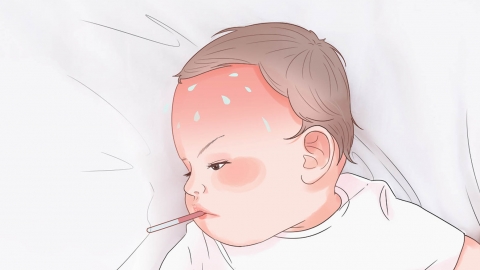How to reduce a child's fever quickly
Generally, a child's fever may be caused by factors such as excessive ambient temperature leading to impaired heat dissipation, excessive heat production after strenuous activity, infantile emergency rash (exanthem subitum), acute tonsillitis, or acute bronchitis. It is recommended to seek timely medical attention, identify the underlying cause, and then improve the condition through general treatments, medication, or other methods under a doctor's guidance. Detailed explanations are as follows:

1. Excessive ambient temperature and impaired heat dissipation: stuffy and hot indoor conditions or excessive clothing may prevent normal heat dissipation in children, leading to fever. Immediately open windows for ventilation, adjust the indoor temperature to 22-26°C, reduce the child's clothing, choose loose and breathable cotton garments, and use lukewarm water to wipe areas such as the forehead and armpits to help dissipate heat.
2. Excessive heat production after strenuous activity: prolonged running, jumping, and playing in children can accelerate metabolism and increase heat production, exceeding the body's heat dissipation capacity and causing fever. Have the child stop activity, rest in a quiet environment, and drink warm water in small amounts frequently to replenish fluids and promote heat dissipation through sweat and urine.
3. Infantile emergency rash (Exanthem subitum): commonly caused by infection with human herpesvirus 6. The virus stimulates the body, causing high fever, often without other obvious symptoms. A rash typically appears after 3-5 days of fever. If body temperature exceeds 38.5°C, medications such as paracetamol suspension drops, ibuprofen suspension, or pediatric Chai Gui antipyretic granules may be used according to medical advice.
4. Acute tonsillitis: inflammation of the tonsils caused by bacterial or viral infection; the inflammation stimulates fever and is accompanied by sore throat and tonsillar swelling. Bacterial infections may be treated with medications such as amoxicillin-clavulanate potassium granules, cefixime granules, or pediatric Yankanning granules, as directed by a physician.
5. Acute bronchitis: inflammation of the bronchi caused by bacterial or viral infection; the inflammation leads to fever accompanied by coughing and sputum production. Medications such as pediatric expectorant and antitussive granules, ambroxol and clenbuterol oral solution, or cefaclor dry suspension may be used for treatment as directed by a physician.
In daily care, regularly measure the child's body temperature and record temperature changes. Avoid feeding the child spicy or greasy foods during fever; instead, choose easily digestible foods such as steamed egg custard or soft noodles. Monitor the child's mental state to aid in recovery.




